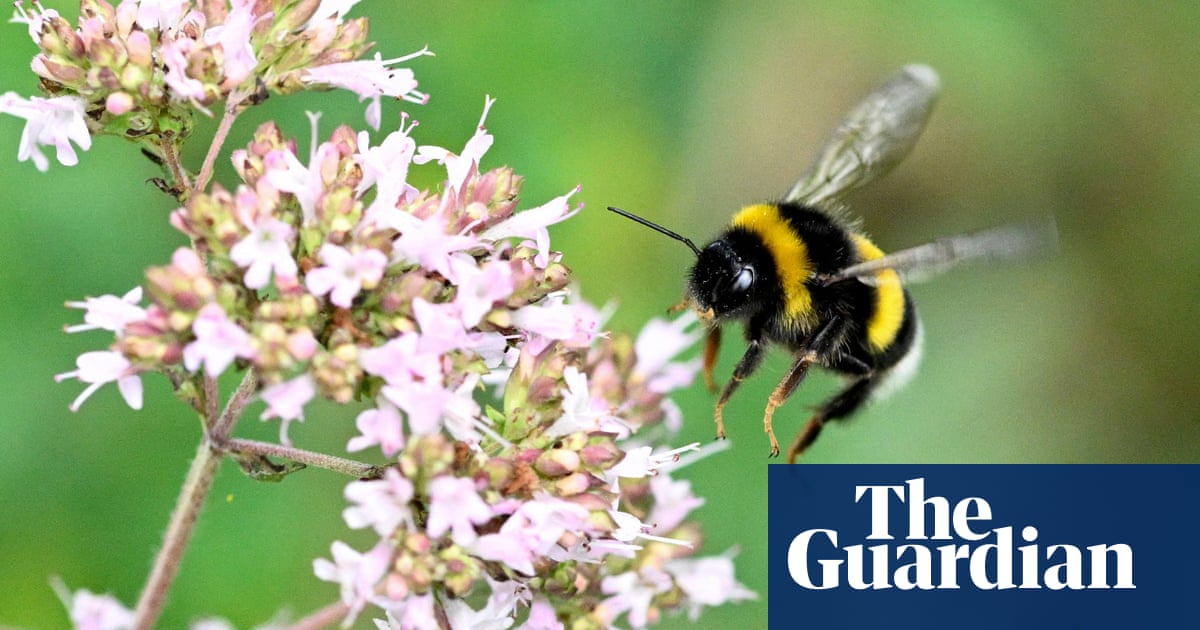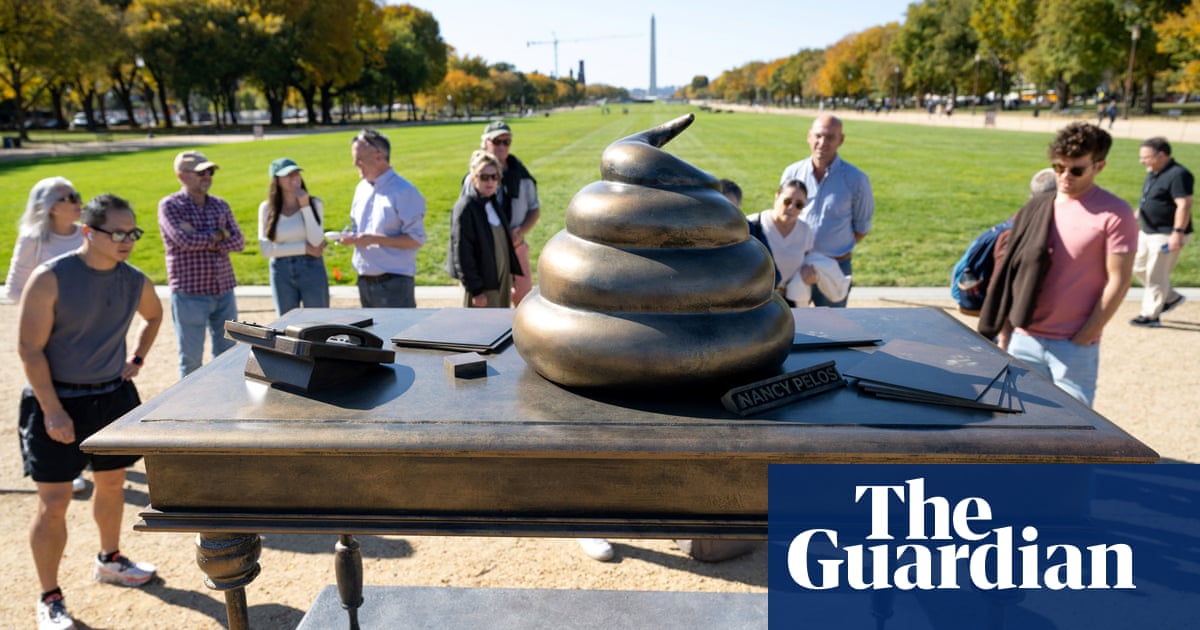Tunnellers, fliers, crawlers: your nominations for the UK invertebrate of the year have been pouring in, paying tribute to these wonderful creatures and testifying over and over again to the wonder and awe that they inspire.
We still have a few days till the voting starts, and we havenât yet worked out which of your many, many suggestions will be added to the list â but the love and enthusiasm for the UKâs invertebrates has bowled us over, so we thought weâd round up some of the tributes to your favourite spineless creatures here.
Please keep sending us your thoughts, and get ready to vote this weekend.
Hummingbird hawk-moth
The first time I saw one up close I couldnât believe my eyes. So weird and beautiful. It was when I had been made redundant from a job I hated and was trying to figure out what to do next. My neighbourâs children were transfixed by the hawk-moth and I took delight in their curiosity. Thatâs when I decided to go into teaching. I still only see one very occasionally, they are quite rare. Inspirational insects deserve recognition. Kate Jannaway, 51, works in SEND support for an FE college, Brighton
Red-tailed bumblebee
Iâd like to posit that the humble bumblebee deserves this accolade for one simple reason: it brings joy. Regardless of oneâs age, it is hard to not see a bumblebee and experience a moment of glee; this tiny, fuzzy, creature, flying around with what seems like little consideration of any of its surroundings, has the capability to make anyone smile. At a time when conservation of wildlife is becoming more and more pressing, I think it is important to highlight the everyday species that often inspire children to explore the field into adulthood. Ronnie Matczuk, 24, bar operations manager, London
Common woodlouse
They are little troopers of the insect world, doing so much for us, which most are not aware of. Highly evolved from the oceans (which is why they like it a little damp) to be on land with us, cleaning our soil, recycling dead matter, curl up when scared like a pangolin, and the moms even have a little pouch to keep their babies in! They live for a long time compared to others their size, love being with each other, do so much for the environment and yet are still so humble. Love them so much. Kathleen Woodward, 45, works in a museum, Derby
Dark-edged bee-fly
These characterful little insects are early emergers and their appearance gives real hope that spring is close. They look fantastic with furry ginger bodies and an outrageously long proboscis and have a fascinating lifestyle. This includes spinning display flights and territorial disputes amongst the males and the female coating her eggs with sand or soil before flicking them into the nest holes of solitary bees. Whatâs not to love? Nick Morgan, 63, accountant, North Yorkshire
Common cockchafer
Cockchafers (known also as maybugs â though theyâre not true bugs, theyâre beetles) are such delightful, characterful things. As their nickname suggests, adults are abundant in late spring/early summer â theyâre often spotted bumbling along or flying into things (for those who do mothing, they can be a lovely surprise as they quite often find their merry way into traps). Though the adults live for only five to six weeks, in which time they reproduce and females lay their eggs, their larvae remain in the soil for up to two years, chomping on plant roots. As well as being very friendly-looking beasts, theyâve also had a great cultural impact â including as emblems of queer zoology. An 1896 drawing of two male cockchafers copulating by the French naturalist, Henri Gadeau de Kerville, is thought to be the first rendering of same-sex sexual behaviour in a non-human animal. Cockchafers have also caused their fair share of aggravation in the agricultural world; a 15th-century French court actually placed the beetles on trial for crop destruction. Though then they were deemed âirrational and imperfect creaturesâ, I plead the contrary. Biliana Todorova, 23, doctoral candidate, Oxford
Rhinoceros beetle
Out for a walk along Kerridge Hill, I was startled when a big black beetle landed on my hand ⦠My instinctive reaction was to instantly slap it off my hand â but fortunately I was holding my camera in that hand, and I just managed to stop myself and take a look at what it was first. Iâm glad I did! The female rhinoceros (the males have a horn) was so delicate and obliging I managed to swap her over to my left hand and snap a few portraits of her beautiful glossy armour before we went our separate ways. Despite the scary appearance she seemed curious, and moved very slowly and tickled my hand as she walked daintily around, exploring this strange new landscape. Why is our first reaction to a strange insect usually to immediately try to kill it? Anthony Skellern, semi-retired graphic designer, Bollington
Common sexton beetle
What a marvellous clear-up job they do for us. I used to wander in the countryside all the time, and one day I spotted a red squirrel tail lying among the dead leaves on the ground. I tugged at it and up came a whole red squirrel, to my astonishment. It seems it would be the food supply, for some time, for the larvae of this beetle. Without that help the world would be covered in tiny smelly corpses, with flies hovering about and their own larvae feeding on them. I have often felt guilty about my action, rendering the industrious beetle with an arduous repeat burial. Hilary Kirkby, 77, retired, south of France
Manx shearwater flea
The Manx flea is one of the only insects found exclusively in the UK. It is threatened with extinction and listed as critically endangered by the IUCN. It is found only on the windswept Isle of Rùm, off the west coast of Scotland within a single colony of Manx shearwaters (Puffinus puffinus), which serve as its hosts. So often invertebrate advocacy focuses on charismatic groups like bees and butterflies, but this year we have the opportunity to highlight one of the âsmall majorityâ of invertebrates overlooked by most people because they arenât as appealing. The Manx flea is as British as Stonehenge, symbolises the plight of many threatened parasites, and is an incredibly unique insect worthy of a place to compete for UK invertebrate of the year! Mackenzie L Kwak, 30, academic, Japan
Harvestman
A class, not a species. But Iâm referring to one of its members: what many people call âdaddy long legsâ. An amazing arachnid that thrives despite eating (apparently) nothing. Iâve never seen one eat anything â and I share my house with these creatures (as well as their annoying cobwebs) all the time. It looks impossibly, wondrously frail, its gossamer legs a marvel of articulation. They sit in corners, motionless. Never seen them outside. Where would they live without humans? I donât know. Wonderful, mysterious survivors. Simon Jones, 68, book translator, Chipping Norton, Oxfordshire
Devilâs coach-horse
Itâs possibly the most ferocious beetle there is in the UK: a fearsome predator thatâs mega aggressive, eats other invertebrates, and has scorpion-like pincers. It terrifies and delights people bug spotting in equal measure, but is not well known about (although common) as active at night. The name alone lets you know how vicious it can be, and they wouldnât be afraid to bite humans either! Like a honey badger in beetle form. Jess Richards, Staffordshire
Medicinal leech
The European medicinal leech was overused in past centuries for medical purposes and although theyâre considered near threatened, they are endangered in the UK. They are still used in medicine because of their incredible saliva, which has uses as an anticoagulant and has its own anaesthetic effect! These creatures have been used by humans for thousands of years and weâre only now fully understanding their amazing physiology, as weâve pushed them to the brink of extinction in some countries. Theyâve got three jaws and a hundred teeth, theyâre slimy and a little creepy, but theyâre incredible little creatures who we owe it to save. Avery Kilmarnock
Common garden snail
I used to enjoy getting out into the natural world, but now my disability is so limiting that Iâm rarely able to leave home. I so love the way that whenever it rains our garden is suddenly alive with snails, all rushing about (at a snailâs pace) to make the most of what to them is perfect weather. Itâs fascinating to watch a life form so unimaginably different from us getting on with its daily business as if we werenât here. Lois Pass, 59, Southend-on-Sea,
Strawberry spider
If people say we have dull-looking invertebrates in this country then they have never seen this spider. Its common name is the strawberry spider and with the bright colour and markings you will see why it gets its name. Itâs a favourite because it not only builds an awesome orb web, but then weaves two leaves together to make a bell shape and hangs that in the top of the web as a retreat. It took me five years to find one of these spiders and I was so pleased to see and photograph it.
So when you next see a spider around maybe salute him or her for the good they do. Or at the very least if you have one in your home and youâre not keen just try and help it back outside. Itâs important to remember itâs not just our planet, and everything from the largest to the smallest deserves our respect and its place on this sphere we call home. James Chisnall, 44, engineer, West Sussex
Bumblebee
Best. Invertebrate. EVER. As the Bumblebee Conservation Trust puts it: âBumblebees are large, furry and charismatic four-winged insects.â And with a Latin name of âBombusâ â which perfectly describes them â how can you not adore them! Fluffy bums, hard-working and so very lovely. From early spring to late autumn and sometimes even into early winter, they give me such joy and hope to watch them â which I do for hours, every year! A vital part of the ecosystem and of our lives â definitely my No 1. Vicky, Hampshire



